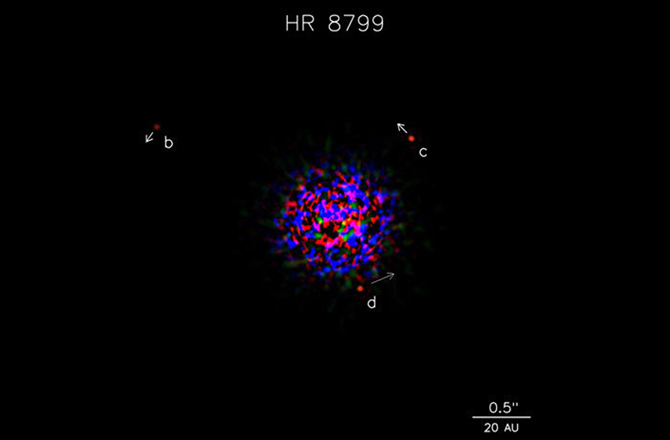It looks like you're using an Ad Blocker.
Please white-list or disable AboveTopSecret.com in your ad-blocking tool.
Thank you.
Some features of ATS will be disabled while you continue to use an ad-blocker.
share:
DeadSeraph
reply to post by JadeStar
Thanks for the detailed response. Do you think that there could be breakthroughs that will allow us to determine or at least infer the makeup of a planets atmosphere in the relatively near future (say in the next 20 years)?
Yes.
And the good news is its not so much a breakthrough as building the equipment.
We already know how to do this and have looked at the atmospheres of large Jupiter sized planets from telescopes on Earth.
So we know how to do it, the trick is to build telescopes. We'd either send up a bunch small space telescopes operating as an interferometer or one large one with a starshade to block out the light of the star or build a telescope physically big enough on Earth (Thirty Meter Telescope (TMT), European Extremely Large Telescope (E-ELT) or Colossus) to directly image terrestrial sized planets.
Luckily of the things I mentioned, two are being built the TMT and E-ELT on Earth and there is serious talk of sending up a star shade when we launch the James Webb Space Telescope. One of them (the fleet of small telescopes) was planned and cancelled (NASA's Terrestrial Planet Finder would have launched next year).
The E-ELT is going to be MASSIVE compared to the Very Large Telescopes (those little boxy things to the right)
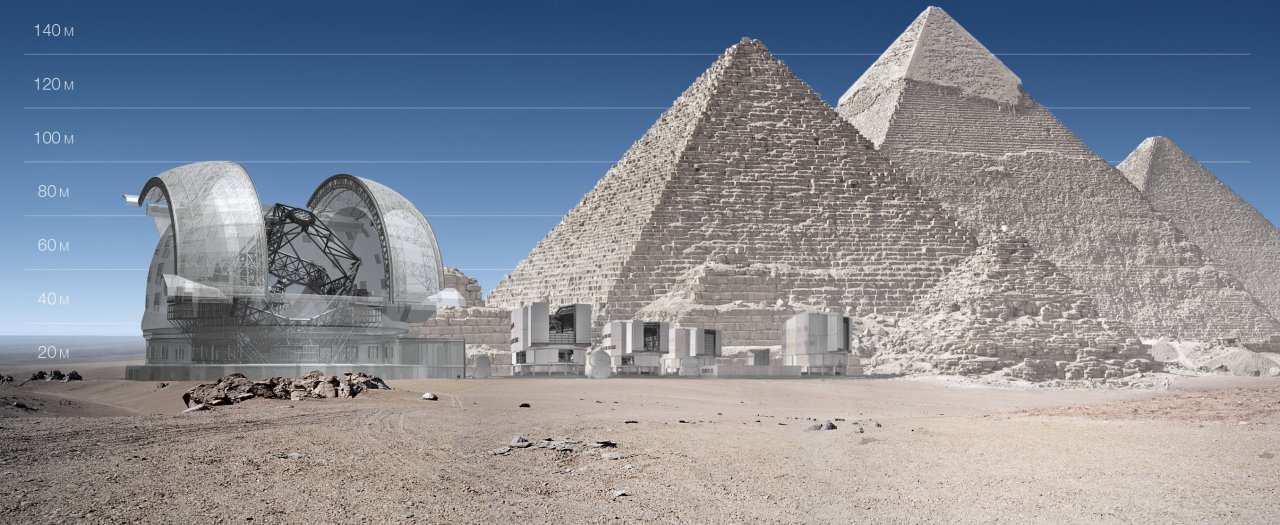
BTW the use of the Pyramids in the image is for size comparison. It is being built in Chile not Egypt.
Colossus would be twice the size of the E-ELT
I'm curious if there are any methods (even in theory) that could allow us to determine these important facts from earth,
or if we will pretty much be in a sort of limbo until we are able to get probes to other star systems to study the makeup of these planets? Given that even the closest stars are still staggeringly far away, it would seem we could be hundreds of years away from actually seeing an earth sized planet in another star system (or being able to actually measure it's atmospheric qualities).
Much can be done from Earth.
Everything from examining their atmospheres to examining them for possible use of technology through waste heat. Additionally there are researchers who have developed a technique to detect the unique character of artificial light (if any) on the night side a terrestrial exoplanet.
We've had the technology to do some of this but unfortunately much of it is tied up in the intelligence community on NRO spysats:
And once we can start getting spectra from exo-Earths back we might discover life by viewing detailed spectra of them:

To answer your question more thoroughly: Yes if we can stick around for the next 30 years this is on the horizon:
From NASA's own roadmap:

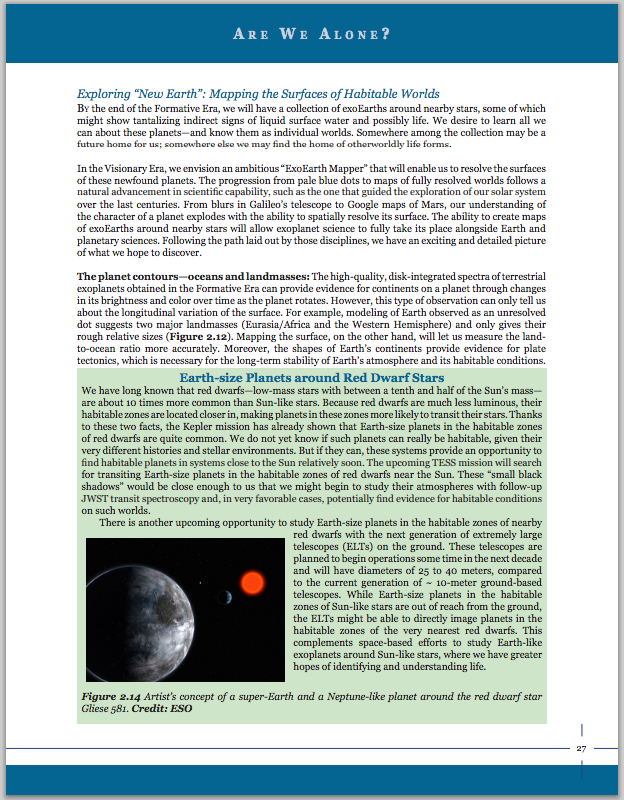
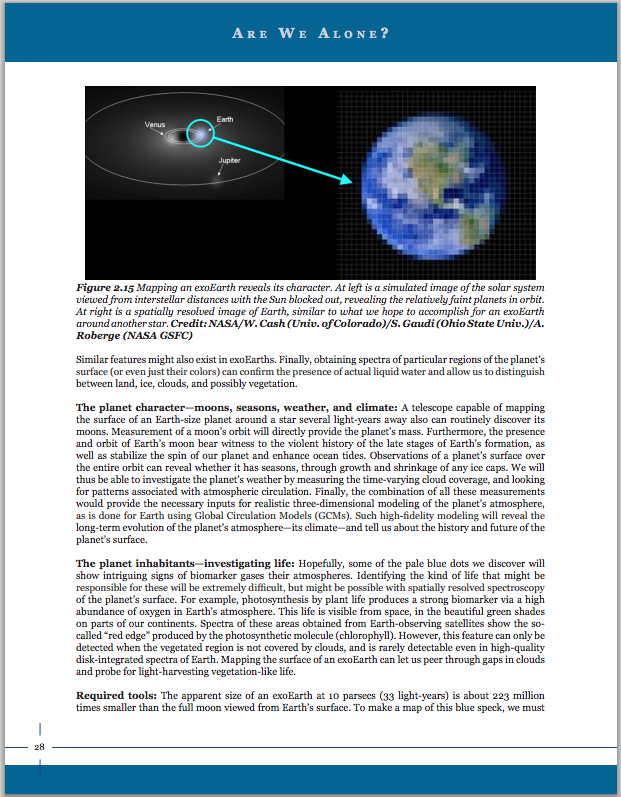
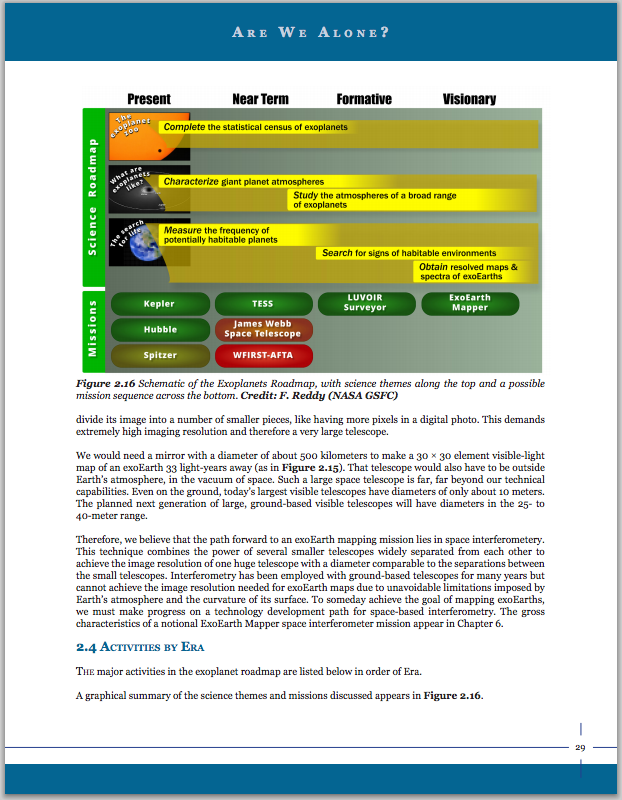
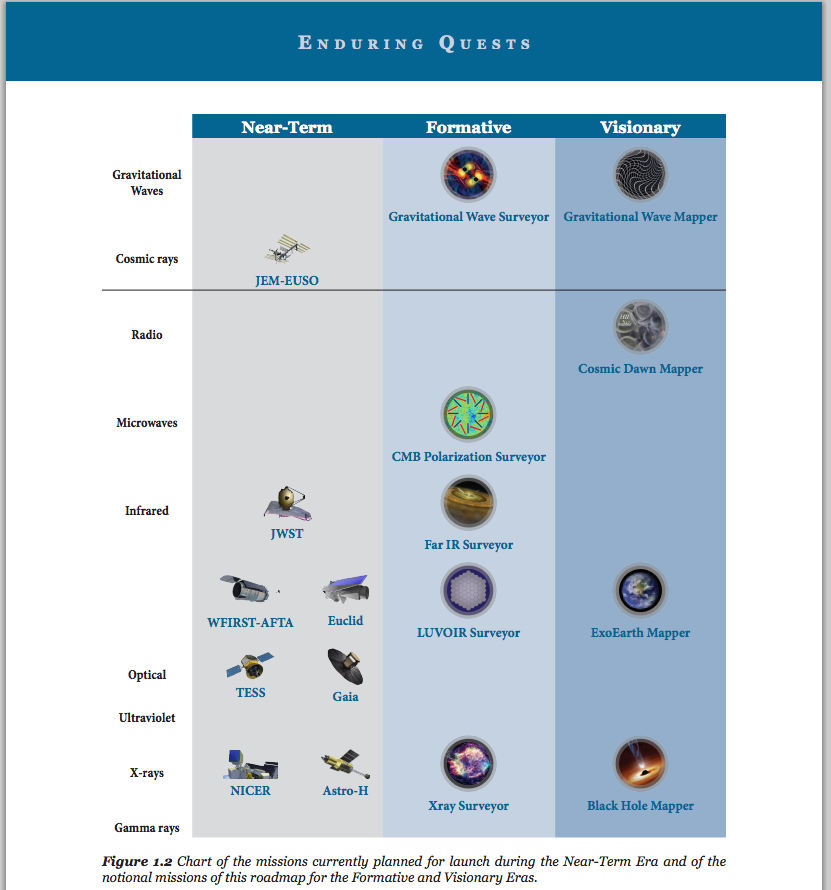
(Near Term = 10 years, Formative = 20 years, Visionary = 30 years)
Beyond Kepler and TESS there are plans for a telescope (called the LUVOIR Surveyor in the chart above)which would characterize the atmospheres of these worlds to tell us if there is life on them.
And Beyond that a telescope (called the ExoEarth Mapper in the chart above) which will actually take detailed pictures of them similar to this picture of Earth from the EPOXI mission is planned:
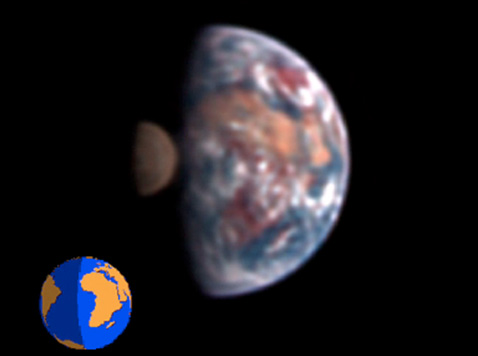
Giving us perhaps a slightly lower res version of a picture like this of a planet around a nearby star (perhaps even as close as Alpha Centauri or Barnard's Star).
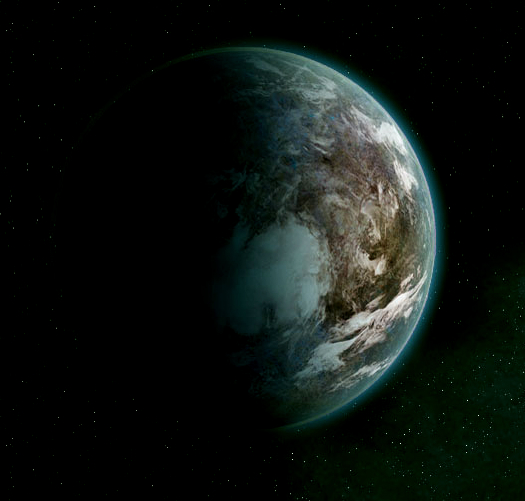
(artist conception of Kepler 22 b)
edit on 24-2-2014 by JadeStar because: (no reason given)
TiedDestructor
reply to post by JadeStar
Post of epic proportions! Thank you.
We live in epic times. Count yourself lucky to be alive right now and share with your friends.
Its easy to get bogged down and depressed about the state of the world we live in. Being in an age of discovery, perhaps the greatest age of discovery is not something people realize.
Its like having been alive in Galileo's time.
Most of the really interesting stuff in this field will be found starting in about 5-10 years and probably going on until we send our first probes in the more distant future.
edit on 24-2-2014 by JadeStar because: (no reason given)
BTW: Thank you stormbringer for all the links you posted and for the help in this thread.
If ya'll gave me a star go back and give him one too And read his links for some fascinating stuff we're doing or about to do.
If ya'll gave me a star go back and give him one too And read his links for some fascinating stuff we're doing or about to do.
I started to post a new thread with this story, taken from today's headlines, but since there was a lot of overlap with questions asked here I'm
posting it here:
Advanced Exoplanet Hunter Images Alien Worlds
FEB 24, 2014 04:04 PM ET // BY MIRIAM KRAMER, SPACE.COM
Now this is not the first image of the planets around HR 8799. But it is the first with the Palomar Observatory.
The Gemini telescope in Chile took this image of them:
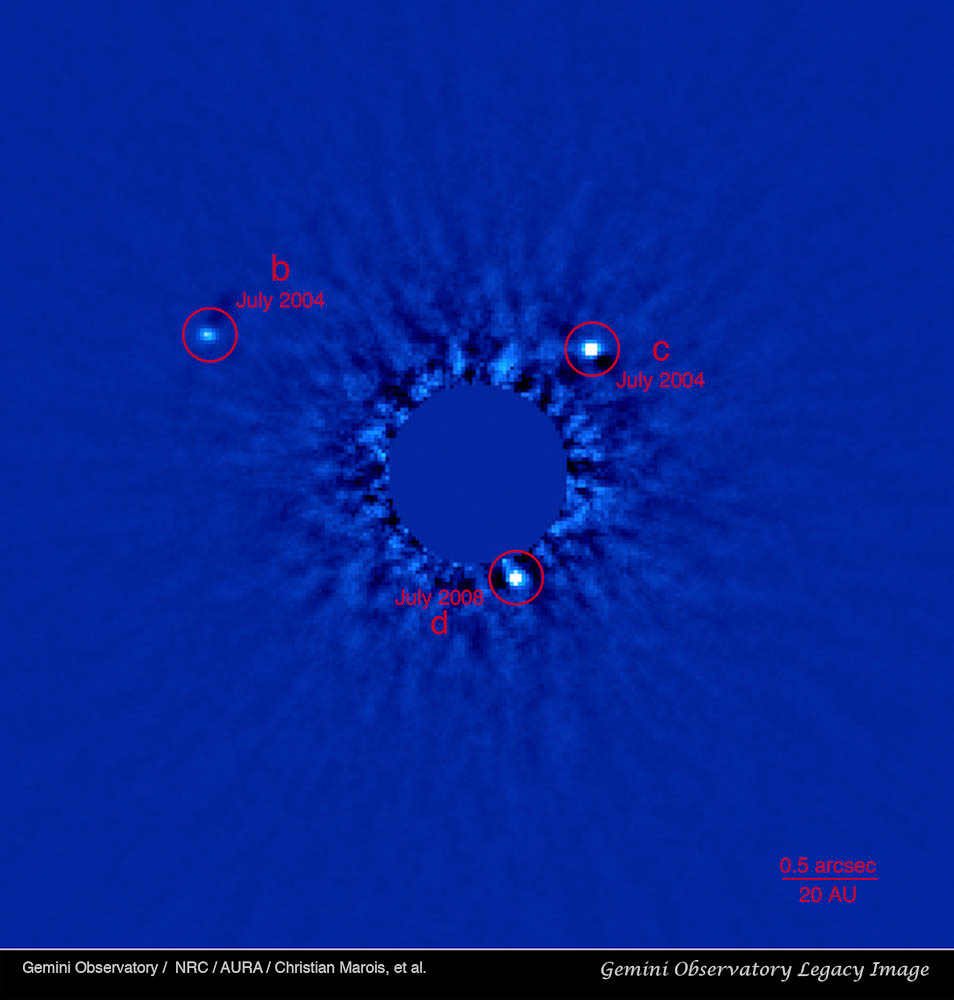
And the Keck telescope in Hawaii' did before that:
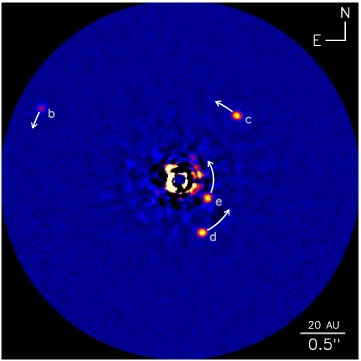
So what's the big deal then?
The Gemini Planet Imager is an 8.1 meter telescope.
The Keck is a 10 meter telescope.
The Palomar Hale telescope is only 5.1 meters big!!
Which proves we can take images of some large, young, planets with smaller, more modest telescopes on Earth. This is important because everyone wants to book time on the largest telescopes like Keck. So less competition on smaller instruments means more time which can be devoted to directly imaging these distant planets.
More than that, it allows researchers to design even better, more sensitive instruments for larger ground and more sensitive space telescopes since they will be able to test them more frequently on telescopes with less competition for observing time.
The Palomar project will look at 200 stars, which tells me they have a nice block of time they might not have got on a large telescope.
Advanced Exoplanet Hunter Images Alien Worlds
FEB 24, 2014 04:04 PM ET // BY MIRIAM KRAMER, SPACE.COM
A planet-hunting project is snapping pictures of alien worlds and other objects orbiting nearby stars in an effort to give scientists a better understanding of these intriguing exoplanets.
ANTONIO M. ROSARIO/GETTY IMAGES
Project 1640 is designed to probe the atmospheres of exoplanets to create new, low-resolution images of the planets and their stars. By understanding the atmosphere of the planets and the composition of the stars, scientists working with the project could potentially learn more about how they formed.
Scientists working with Project 1640 — an imaging system at the Palomar Observatory in California — are using the specialized system to survey about 200 stars looking for a range of planets and other objects, project scientist Ben Oppenheimer said at the American Museum of Natural History event on Feb. 5. According to AMNH officials, Project 1640 is "the most advanced and highest contrast imaging system in the world."
Now this is not the first image of the planets around HR 8799. But it is the first with the Palomar Observatory.
The Gemini telescope in Chile took this image of them:

And the Keck telescope in Hawaii' did before that:

So what's the big deal then?
The Gemini Planet Imager is an 8.1 meter telescope.
The Keck is a 10 meter telescope.
The Palomar Hale telescope is only 5.1 meters big!!
Which proves we can take images of some large, young, planets with smaller, more modest telescopes on Earth. This is important because everyone wants to book time on the largest telescopes like Keck. So less competition on smaller instruments means more time which can be devoted to directly imaging these distant planets.
More than that, it allows researchers to design even better, more sensitive instruments for larger ground and more sensitive space telescopes since they will be able to test them more frequently on telescopes with less competition for observing time.
The Palomar project will look at 200 stars, which tells me they have a nice block of time they might not have got on a large telescope.
edit on
24-2-2014 by JadeStar because: (no reason given)
Does it have a magnetic field strong enough the shield the planet.
If not it would be another mars.
If not it would be another mars.
reply to post by JadeStar
Thanks for taking the time to create such a detailed reply. This is exactly the kind of info I was hoping to learn about. Very much appreciated!
Thanks for taking the time to create such a detailed reply. This is exactly the kind of info I was hoping to learn about. Very much appreciated!
the size of this planet does not make the ability to detect what they did noteworthy. it's easier to determine stuff about gas giants in general but
what is notable is they were able to detect water in a planet that was not a fit for the two most often used techniques which involves the planet
being the right distance from the star or being a transiting planet. Instead they used an unrelated technique and that means that being able to gather
intelligence on any planet not just special ones has been advanced.
www.sciencedaily.com...
www.sciencedaily.com...
stormbringer1701
the size of this planet does not make the ability to detect what they did noteworthy. it's easier to determine stuff about gas giants in general but what is notable is they were able to detect water in a planet that was not a fit for the two most often used techniques which involves the planet being the right distance from the star or being a transiting planet. Instead they used an unrelated technique and that means that being able to gather intelligence on any planet not just special ones has been advanced.
www.sciencedaily.com...
Thanks for posting that.
Yes, this opens up a new tool we can use in studying the nearby, non-transiting exoplanets. Establishing water in the atmosphere using a new technique is excellent.
It also brings up the possibility that a similar planet: Upsilon Andromedae A d (Ups And A d) could be examined for water. Tau Bootes and Upsilon Andromedae A were both found to have planets which were announced by Geoffrey "King of Planets" Marcy in the same announcement back in 1996.
Ups And A d is a gas giant in the habitable zone of of its star. It could have habitable moons. So detecting water in Ups And A d's atmosphere could very well foreshadow a future discovery of a habitable moon or moons around the planet.

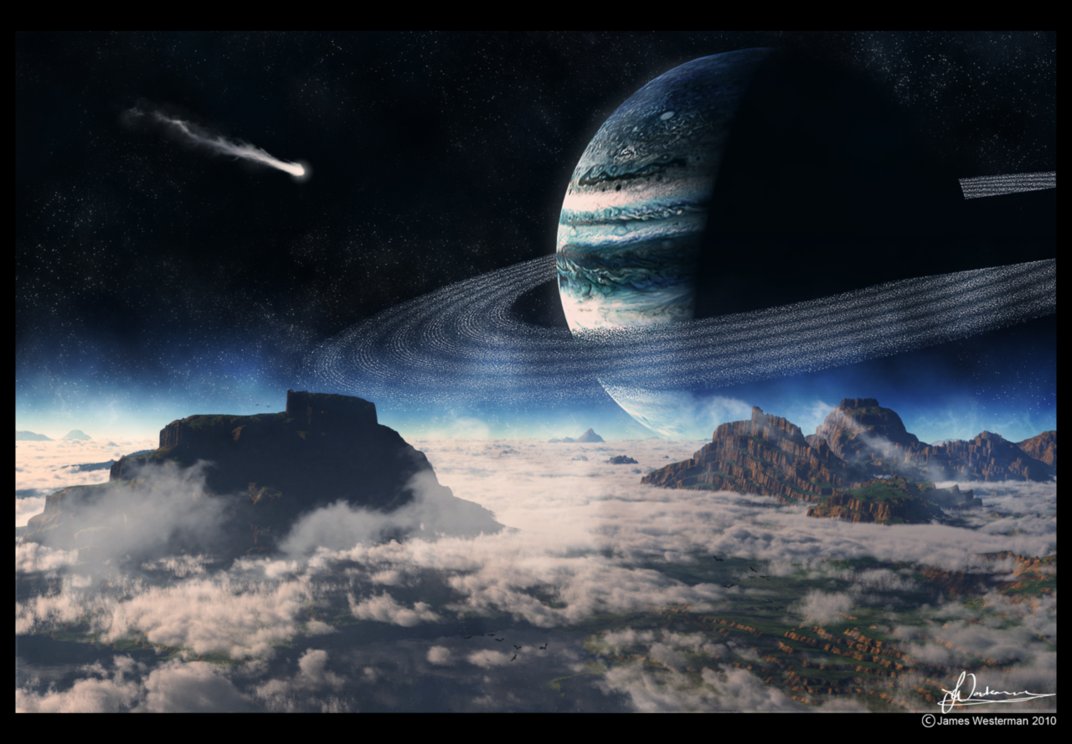
Researchers at Penn State are doing some very innovative work and have established their own Center for Exoplanets and Habitable Worlds so expect them to be at the forefront of a lot of exoplanet and habitability research along with MIT, Harvard and UW.
edit on 25-2-2014 by JadeStar
because: (no reason given)
Just keep in mind that astronomers may not be seeing what they think they are.
Rife with hype, exoplanet study needs patience and refinement
phys.org...
As there are no decent images yet of Alpha Centauri, let alone any possible planets, all this talk of detecting planets around stars thousands of light years away really makes me doubt their claims. A.Cent A and B are most likely planets IMO, and anything around them moons. When we can see A and B with the same detail that we see our Sun, through SOHO, then I'll believe they are Suns.
Rife with hype, exoplanet study needs patience and refinement
phys.org...
As there are no decent images yet of Alpha Centauri, let alone any possible planets, all this talk of detecting planets around stars thousands of light years away really makes me doubt their claims. A.Cent A and B are most likely planets IMO, and anything around them moons. When we can see A and B with the same detail that we see our Sun, through SOHO, then I'll believe they are Suns.
reply to post by JadeStar
Excellent, a planet twice the size of Earth. We can screw that one up twice as much.. send a prob..
Excellent, a planet twice the size of Earth. We can screw that one up twice as much.. send a prob..
edit on
Tue20140000005553America/Chicago60 by douggie60 because: spelling
GaryN
Just keep in mind that astronomers may not be seeing what they think they are.
Rife with hype, exoplanet study needs patience and refinement
phys.org...
As there are no decent images yet of Alpha Centauri, let alone any possible planets, all this talk of detecting planets around stars thousands of light years away really makes me doubt their claims. A.Cent A and B are most likely planets IMO, and anything around them moons. When we can see A and B with the same detail that we see our Sun, through SOHO, then I'll believe they are Suns.
actually Apha Centauri B has a planet that is roughly earth sized. it is just too close to the sun to be of use to us. but a full survey of those systems has not been done. there may be more planets there that are not in transiting orbits or otherwise amenable to detection yet. though i think there are several projects aiming at surveying those stars again. who knows... the upcoming announcement may be from one of those projects.
statistically, red dwarfs have a 1/6 chance of having an earth sized planet in it's rather snug life zone.
alpha proxima; the closest star to us is a red dwarf. as are Barnard's star and wolf 359. We have Three of them within 6 light years with the closest one being just 4.26 ly away. and within ten LY there are even more.
edit on 25-2-2014 by stormbringer1701 because: (no reason
given)
you know a couple of hundred to a 1000 years from now we might be technologically advanced enough to move that planet out away from it's star. in fact
we might be able to do that to Venus. then the fact that that planet is there would be a good thing.
edit on 25-2-2014 by stormbringer1701
because: (no reason given)
stormbringer1701
statistically, red dwarfs have a 1/6 chance of having an earth sized planet in it's rather snug life zone.
alpha proxima; the closest star to us is a red dwarf. as are Barnard's star and wolf 359. We have Three of them within 6 light years with the closest one being just 4.26 ly away. and within ten LY there are even more.edit on 25-2-2014 by stormbringer1701 because: (no reason given)
Hmmm... actually there's research indicating close to half of red dwarfs could have a planet in the habitable zone:
Statistics of Nearby Earth-like Planets Around M-dwarfs Stars
94% likelihood of a habitable planet around an M-dwarf within 10 light years of Earth.
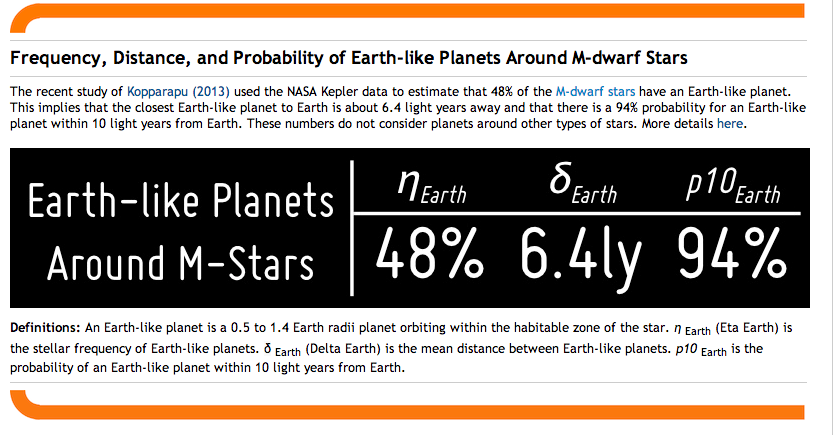
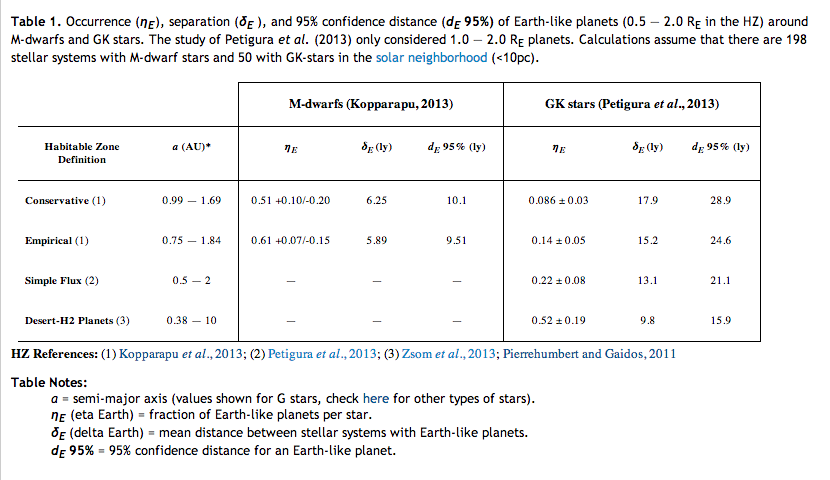
Kopparapu, R. K. (2013). A Revised Estimate of the Occurrence Rate of Terrestrial Planets in the Habitable Zones around Kepler M-dwarfs. The Astrophysical Journal Letters, 767, 1, L8.
edit on 25-2-2014 by JadeStar because: (no
reason given)
edit on 25-2-2014 by JadeStar because: (no reason given)
And yet some of these indirectly detected planets have been subsequently imaged optically. so there is that. also the pessimistic writers there neglect the fact that these indirectly detected planets have spawned a rapid increase in our capability to detect them by different means. i remember when it was commonly said that to detect a planet around another star would take a telescope larger than the planet. is that true now? no. we can resolve planets with relatively small terrestrial based instruments. in conclusion i think the authors of that article went way too far in their pessimism. we already know that some of these detections are likely false. these guys want to throw cold water and they do not care that any water throwing is totally unnecessary. by gum they're gonna throw that water. in short. they are nerd hipsters.
GaryN
Just keep in mind that astronomers may not be seeing what they think they are.
Rife with hype, exoplanet study needs patience and refinement
phys.org...
As there are no decent images yet of Alpha Centauri, let alone any possible planets, all this talk of detecting planets around stars thousands of light years away really makes me doubt their claims. A.Cent A and B are most likely planets IMO, and anything around them moons. When we can see A and B with the same detail that we see our Sun, through SOHO, then I'll believe they are Suns.
nerd hipsters!
edit on 25-2-2014 by stormbringer1701 because: (no reason given)
douggie60
reply to post by JadeStar
Excellent, a planet twice the size of Earth. We can screw that one up twice as much.. send a prob..edit on Tue20140000005553America/Chicago60 by douggie60 because: spelling
no offense... but if that is your attitude what in the hell are you doing in a thread full of hope and optimism about space exploration? your attitude goes beyond the debate of manned verses robotic exploration.
you think that because of our flaws we should just give up on the whole idea. well humanity is the same as it has always been and we will never evolved out of being part evil and part noble. thus waiting for what is not going to happen ever is futile. we (humanity) are the only reason for which we have any justification to act. and that includes what you view as "messing up the planet." if you really have that attitude you should do the earth a favor and off yourself and your family so that you "harm the earth" no further. put your money where your mouth is and act on your convictions. the rest of us realize that exploiting the earth and the universe in a reasonably prudent manner is our right. if the universe objects it will stop us. otherwise we will drive on.
Rezlooper
Thanks for the heads up JadeStar. Realistically, the universe is too vast and it's probably not too far off in our distant future that we find out there are many Earth-Twins, and not too far off from that time, we may find they are booming with life. Interesting times indeed!
I agree with you, I bet the Galaxy is teeming with life. I hope that soon or they may already have, developed some type of wormhole generator or FTL translator that can get us to said system in minutes or seconds instead of eons. I truly think that the wormhole will be the key.
new topics
-
Who guards the guards
US Political Madness: 2 hours ago -
Has Tesla manipulated data logs to cover up auto pilot crash?
Automotive Discussion: 4 hours ago -
whistleblower Captain Bill Uhouse on the Kingman UFO recovery
Aliens and UFOs: 9 hours ago -
1980s Arcade
General Chit Chat: 11 hours ago
top topics
-
Lawsuit Seeks to ‘Ban the Jab’ in Florida
Diseases and Pandemics: 16 hours ago, 21 flags -
CIA botched its handling of sexual assault allegations, House intel report says
Breaking Alternative News: 14 hours ago, 10 flags -
whistleblower Captain Bill Uhouse on the Kingman UFO recovery
Aliens and UFOs: 9 hours ago, 9 flags -
Deadpool and Wolverine
Movies: 12 hours ago, 4 flags -
1980s Arcade
General Chit Chat: 11 hours ago, 4 flags -
Teenager makes chess history becoming the youngest challenger for the world championship crown
Other Current Events: 13 hours ago, 3 flags -
Who guards the guards
US Political Madness: 2 hours ago, 3 flags -
Has Tesla manipulated data logs to cover up auto pilot crash?
Automotive Discussion: 4 hours ago, 1 flags
active topics
-
15 Unhealthiest Sodas On The Market
Health & Wellness • 38 • : FlyersFan -
The Superstition of Full Moons Filling Hospitals Turns Out To Be True!
Medical Issues & Conspiracies • 18 • : firerescue -
IDF Intel Chief Resigns Over Hamas attack
Middle East Issues • 34 • : FlyersFan -
Lawsuit Seeks to ‘Ban the Jab’ in Florida
Diseases and Pandemics • 26 • : network dude -
Candidate TRUMP Now Has Crazy Judge JUAN MERCHAN After Him - The Stormy Daniels Hush-Money Case.
Political Conspiracies • 629 • : Justoneman -
"We're All Hamas" Heard at Columbia University Protests
Social Issues and Civil Unrest • 211 • : Vermilion -
Mood Music Part VI
Music • 3088 • : TheWoker -
whistleblower Captain Bill Uhouse on the Kingman UFO recovery
Aliens and UFOs • 9 • : Ophiuchus1 -
The Democrats Take Control the House - Look what happened while you were sleeping
US Political Madness • 107 • : watchitburn -
They Killed Dr. Who for Good
Rant • 65 • : grey580

